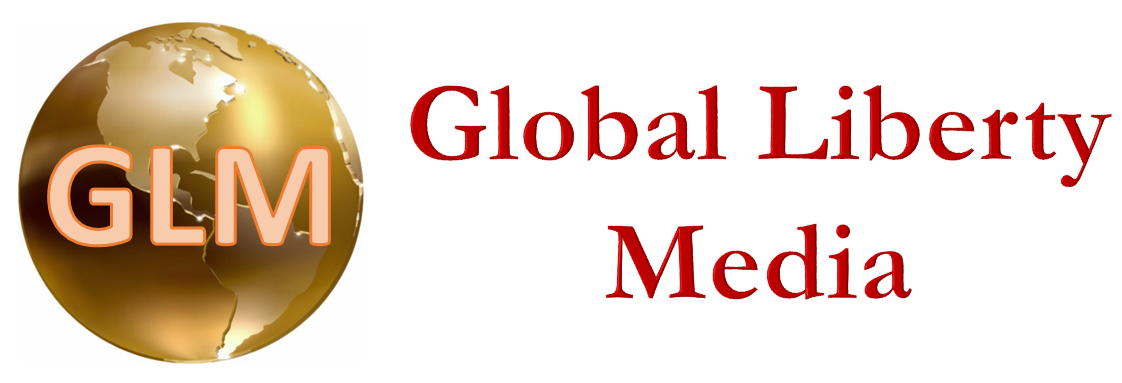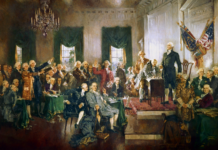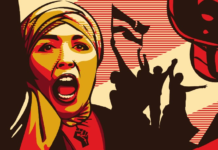The following is a brief look at the first five pages of Chapter 7, from my upcoming book on Critical Race Theory. It is coming along very well and I am hoping to have it completed by the end of the summer, if not sooner. I am trying to keep it short and sweet, with an emphasis on the scholarly work being done in higher academia, which lays the groundwork for how educators are trained in its use. I do not claim that this is the definitive book on CRT, but I believe it shows a couple of important points. One, it goes far beyond the basic idea of teaching America is a racist nation, and two, fighting it is nearly impossible when even the colorblind approach Americans take to racial relations still promotes white supremacism. This chapter explores the CRT tenet of storytelling and the 1619 Project.
So far, we have discussed how Critical Race Theory is used in Math and English education. It is hoped that readers will see fighting CRT in elementary school as virtually useless, as it has been shown that scholars in the halls of higher academia are hard at work looking for new ways to apply it. Langcrit is a good example. There is no extensive research being done concerning language as an oppressive tool, so a radical Marxist scholar invented a model to do so. If that isn’t an example of a social construct, I don’t know what is.
While there are many scholarly books written on CRT in education, particularly concerning math, little was found on CRT in history education. For example, in Chapter 5, I cited a book called Critical Race Theory in Mathematics Education. There isn’t a book called CRT in History Education, that I could find. I did a search in the Google Scholar search engine, and in the Liberty University database, and the most I am coming up with are articles on the history of CRT. I think the answer is obvious as to why. History is being dramatically changed through the lens of CRT, and our children’s elementary schools are being used to rewrite it.
One of the biggest points I keep making in this book, and it is one made by the left as well, is that CRT is not being taught in elementary school. Technically, it isn’t. Our children are not learning how to analyze society’s laws and institutions from a Critical Theory Perspective. That is what CRT is, a framework, or a model of research designed to reinforce pre-existing, biased conclusions. Instead, they are learning the opinions of people who have a vested interest in using race as a tool of societal transformation.
Critical Race Theory, according to the World Socialist Website,[1] is a body of scholarly work which combines elements of postmodernism and historical revisionism. What is historical revisionism? According to Histroyplex.com,[2] it is the critical reexamination and altering of historical facts, for either benevolent or malevolent reasons. The socialist website is admitting that CRT is incorporating historical revisionism, therefore, they are admitting that history is being rewritten.
One of the major tenets of CRT, as discussed earlier, is storytelling and counter-storytelling. This is the idea that people of color, through their own voices, or their own narratives, recount history and their own experiences. According to Carter (2021), this is a legitimate way of proving ideas that are more effective than citing objective facts. This is because CRT scholars view scientific reasoning as a “discredited narrative” (Carter, 2021) when it comes to topics like historic oppression, therefore, they give more credibility to the idea of counter-storytelling (Carter, 2021).
Here is where it gets interesting, if not downright disturbing. Carter (2021) cites a prominent CRT scholar from New Mexico State University named Jeanette Haynes Writer. He provides the quote, but he doesn’t provide the source where it came from. I found it in an article of hers entitled Unmasking, Exposing, and Confronting: Critical Race Theory, Tribal Critical Race Theory and Multicultural Education[3] where she argues a point made earlier in this book. Multicultural education does not go far enough in addressing social justice issues and only focuses on mundane topics like food, and other cultural traditions for the sake of appearing to do something about endemic racism. The quote is important because one of CRT’s main tenets is the theory of constructionism. Race, for example, is a social construct. Achievement and merit, along with individual responsibility, are also social constructs. Here we have a prominent CRT scholar, being cited in a socialist journal, admitting that the realities that constitute CRT are themselves, nothing but a construct.
“The goal of CRT (Critical Race Theory) is to construct an alternative reality by naming one’s reality through storytelling and counter-storytelling; thus, the advantage of CRT is the voice it provides people of color.” (Jeanette Haynes Writer)
This is what CRT is doing to history education. It is rejecting historical facts on the basis that scientific reasoning is a discredited narrative, and storytelling is viewed as a more effective method of retelling history than the citing of historic facts. This is where the 1619 Project comes in. The 1619 Project is a critical reexamination of history based on the perspectives of Critical Race Theory, and it isn’t being done in a benevolent manner. Originally published in the New York Times[4] by Nikole Hannah-Jones in 2019, The 1619 Project attempts to radically change the origins of America’s founding. The author argues that 1776 should not be the year associated with the birth of the nation, but rather, the year the first African slaves arrived on the continent, 1619. Hannah-Jones also published a book called The 1619 Project: A New Origin Story for America, in 2021. I am not certain if this is the same material presented in The New York Times piece. I will say however, the magazine article explains the core beliefs of the project well enough to avoid having to buy the book. From what I can see, the book builds on the original New York Times piece. Interestingly, the website 1619books.com reveals the project for exactly what it is. An “award-winning reframing of American history that placed slavery and its continuing legacy at the center of our national narrative.” The question is, does it belong there?
The 1619 Project is a perfect example of how CRT is used. If you remember, in Chapter 4, I mentioned Marcus Garvey and his philosophy of using a race-first approach, and what he referred to as the “disabilities of race” as a weapon. This is what is happening with the 1619 Project. American history has been reframed, putting the issue of race and slavery at the forefront as a means of discrediting our nation, instead of highlighting the fact that it was the very principles enshrined in our constitution, that led to the end of slavery.
It could be argued that the 1619 Project was what awakened Americans to the issue of Critical Race Theory in school. In fact, the backlash which came from conservatives was so great that the University of North Carolina denied Hannah-Jones a position as a tenured professor.[5] In response to 1619, President Trump banned its use and instituted something called the 1776 Project which directed schools to lean more towards a patriotic version of history. President Biden, upon taking office in 2021, ended that program. Whether schools are teaching that America’s true beginning is in 1619, or 1776, there is little doubt that elementary schools are teaching lessons based on the tenets of CRT. It is important to remember, however, and this is something I mentioned in earlier chapters as well, CRT scholars often reject work as being CRT simply because it discusses the issue of racism. This is important because it allows elementary schools to teach race-based lessons while denying any relationship to CRT.
Another example of how the tenets of CRT shape the 1619 narrative is storytelling. In an interesting and contradicting way, however, the author denies her father’s perspective as being legitimate in favor of her own. The opening paragraphs describe Hanna-Jones’ father as being a patriotic American veteran who flies his American flag high and proud. In fact, she alludes to the idea that her father took more pride in his flag than his home, as she describes it as always being in a pristine state, and their house, in a serious state of disrepair. Of course, she is describing the home to give the impression that only black people live in such places. White people’s homes are never in such a state. The point is that she discredits her father’s patriotism in favor of her own views. She claims that while in school, she was taught that the American flag never belonged to Black people, and the only “thing that black Americans could have to cultural pride could be found in our vague connection to Africa, a place we had never been” (Hanna-Jones, 2019).
While CRT advocates personal storytelling as a legitimate means of describing the Black experience, it seems this only applies if you agree with the oppression narrative. Hannah-Jones’ father was a patriotic American, who had served honorably. He loved this country and because she had been taught to hate it, she refused to see her father’s viewpoint.
[1] Carter, T. (2021, August 29) The Ideological Foundations of Critical Race Theory. World Socialist Website. wsws.org
[2] What is Historical Revisionism and How Does it Influence History? Histroyplex.com Retrieved June 12, 2022.
[3]Haynes Writer, J (2008) Unmasking, Exposing, and Confronting: Critical Race Theory, Tribal Critical Race Theory and Multicultural Education. The Journal of Multicultural Education, 10(2) pp. 1-16.
[4] Hannah-Jones, N. (2019, August 18) The 1619 Project. The New York Times
[5] Adams, C. (2021, May 20) UNC Withholds Tenure for “1619 Project” Journalist After Conservative Backlash. www.nbcnews.com























